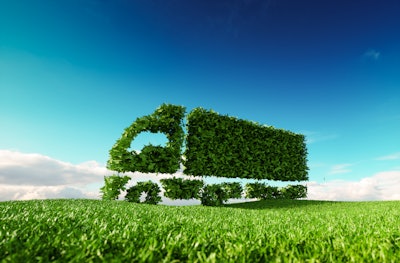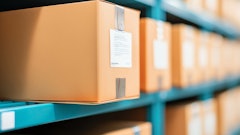
It’s hard to believe we’re still talking about the effects of the pandemic on consumer shopping habits, but the way we shop has undeniably changed. The ecommerce boom made digital natives of all of us. While traditional retail is back, shoppers are jumping between ecommerce, brick and mortar and social channels with ease. Omnichannel is now the norm, and consumers’ options for shopping and delivery are endless.
However, this shift to a new shop-from-anywhere economy has come at some environmental costs that have not been lost on consumers. A recent consumer survey shows that consumers have growing concerns about the impact of their shopping habits on the environment.
According to the survey, 40% of consumers are concerned about the environmental impact of increased online shopping, and 66% believe it’s important for retailers to improve sustainability efforts. But consumers are unsure exactly how their shopping habits impact the environment.
- 29% are unsure about the environmental impact of online vs. in-store shopping
- 32% are unsure of the impact of increased online shopping over the past 3 years
The truth is, shoppers may not have fully considered the environmental impacts of final mile delivery because they are unaware of the carbon-intensive process of ecommerce fulfillment. They may think about the sustainability of the materials their products are made of or the packaging they arrive in, but they may not be aware that the World Economic Forum predicts there will be 36% more delivery vehicles in inner cities by 2030, or that Accenture predicts an increase in carbon emissions from urban delivery vehicles of 32% by 2030.
Building a More Sustainable Final Mile
The responsibility, then, lies with the supply chain industry to mitigate the effects of final mile delivery through two simple means.
The first is to reduce time in transit (TNT) on final mile deliveries by forward-stocking inventory as close to the end customers as possible. Forward-stocking inventory eliminates long-zone shipments and enables merchants to meet consumer expectations for fast shipping via ground as opposed to air, which emits six times the carbon of a ground shipment. In fact, at Ware2Go. for example, has found that merchants who distribute their inventory across three warehouses reduce their carbon emissions by 34% compared to those who fulfill all orders from a single warehouse.
The second is carbon offsetting. Ultimately, fulfillment and delivery will have some degree of carbon footprint until alternative fuel sources are more readily available. Offsetting carbon emissions through the purchase of carbon credits through a reputable provider enables companies to use their buying power to fund vital nature preservation projects. The key word here is reputable. Carbon offsets have come under some well-deserved scrutiny in recent years, and vendors should be held accountable for the validity of the projects they fund. Fortunately, new carbon offset companies are leveraging technology such as remote sensing and artificial intelligence to measure carbon storage and monitor changes over time with much greater accuracy.
Guiding Consumers to More Sustainable Choices
But this still does not solve the problem of consumer awareness. This is where merchants have the opportunity to guide consumers to more sustainable choices. Consumers want to shop more sustainably.
- 60% of consumers are more likely to purchase from a brand with sustainable shipping
- 59% say programs like carbon offsets are important to their purchasing decisions.
- 35% want to see retailers implement a distributed warehousing model to lower TNT
However, they don’t know where to find sustainable shipping options if retailers do not advertise them and 42% of consumers report that they rarely or never see sustainable shipping options advertised. Retailers, then, must be reducing TNT, offsetting emissions and guiding consumers to more sustainable choices by advertising sustainable practices
The Supply Chain of the Future
The growing concern among consumers and the increased investment in hybrid cars, alternative fuel sources, sustainable foods and more is heartening. But there is so much more work to be done. Studies have shown that communities exposed to greater levels of air pollution are more susceptible to respiratory infections, heart disease and lung cancer. We sometimes look at the effects of climate change as problems for future generations to contend with, but many of these threats are immediate.
Often, when we talk about supply chain innovation, we talk about demand planning, machine learning, and resilience. There’s no doubt that the supply chain has evolved to meet changing shopping habits and increased expectations for reliability and speed. However, the next innovation in the supply chain must be a sustainable one – one that not only meets the needs of consumers but the needs of our planet.
















![Pros To Know 2026 [color]](https://img.sdcexec.com/mindful/acbm/workspaces/default/uploads/2025/08/prostoknow-2026-color.mduFvhpgMk.png?ar=16%3A9&auto=format%2Ccompress&bg=fff&fill-color=fff&fit=fill&h=135&q=70&w=240)



